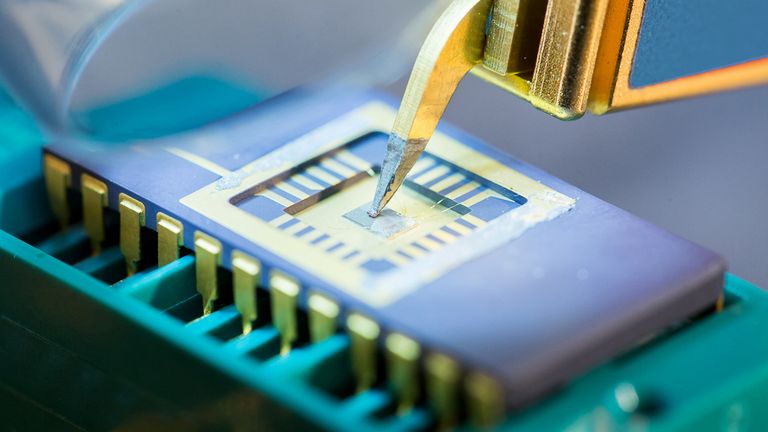The security of your firmware updater independently confirmed
Firmware updates are intended to improve a product's functionality and security. However, the opposite is true when an insecure firmware updater opens the door for cybercriminals to successfully attack.
By testing and certifying your firmware update loader, you as a manufacturer can objectively prove that your universally used firmware update mechanism meets the highest security requirements. Our approach makes it possible to test and evaluate only the isolated firmware updater - independent of the actual solution-specific firmware.
The result: A Trusted Product certificate that serves as proof of trust and security to business partners and customers.
Our services for your firmware updater
The evaluation comprises four distinct phases, covering both a detailed review of design and source code as well as extensive validation testing.




- Define boundaries between firmware updater and other parts
-
Optional: Determine additional security requirements




- Review of the updater’s high-level design
- Detailed review of firmware updater code
- Derivation of test plan


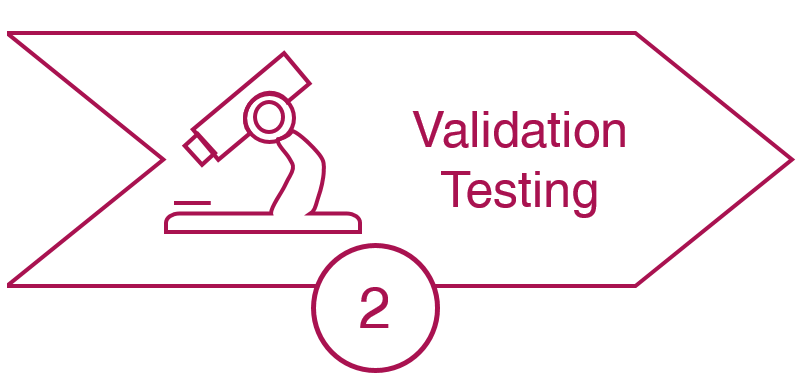

- Logical tests (e.g. fuzz tests)
- Physical tests (depending on security level including side-channel analysis)




- Documentation of results
- If all requirements are met: issuance of certificate
Download our certification concept
Would you like to learn more about the requirements to be met and the certification process of a firmware update loader? Then download our certification concept free of charge.
Download with restricted access
Firmware security: our firmware update certification concept
Timeboxed evaluation
To meet a reasonable time-to-market while maintaining a comparable and suitable rigor of testing, the evaluation is strictly timeboxed. Fixed timeboxes allows to give a precise information on project start on the evaluation and certification duration. In a specified time window, an experienced auditor then determines the attacker potential (attack window, expertise, equipment) in relation to your firmware updater.
The minimal requirements for secure firmware update mechanisms at a glance
Minimal Requirements
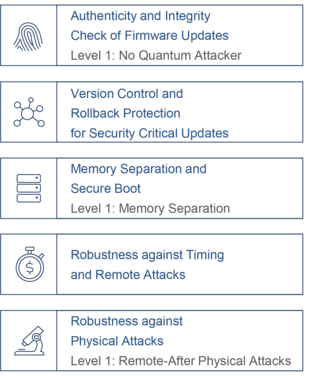
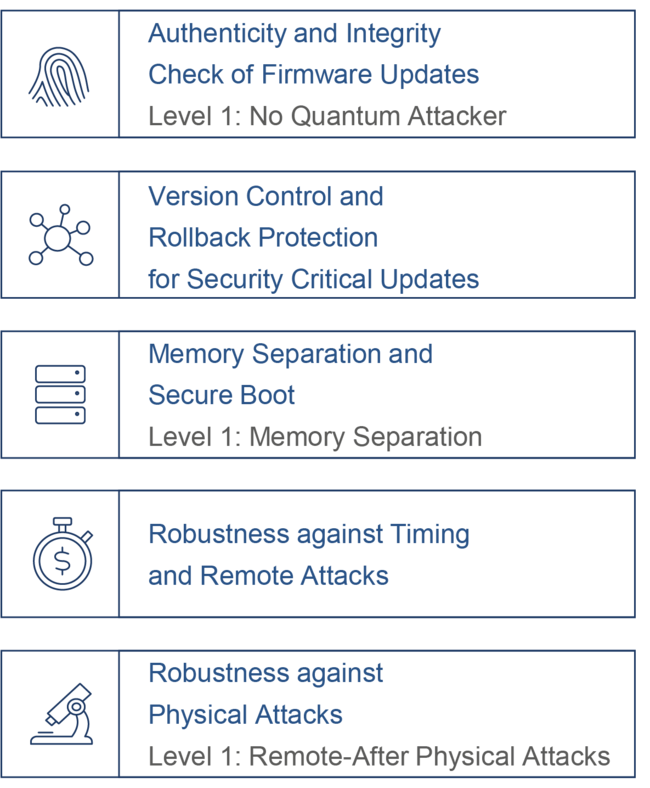
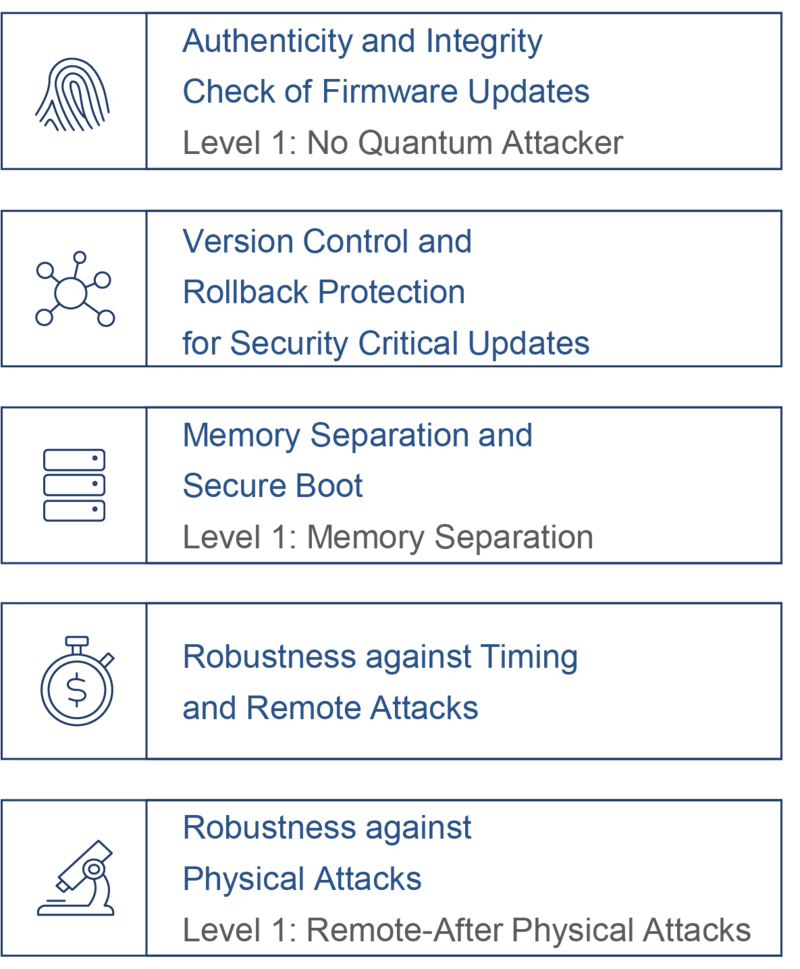
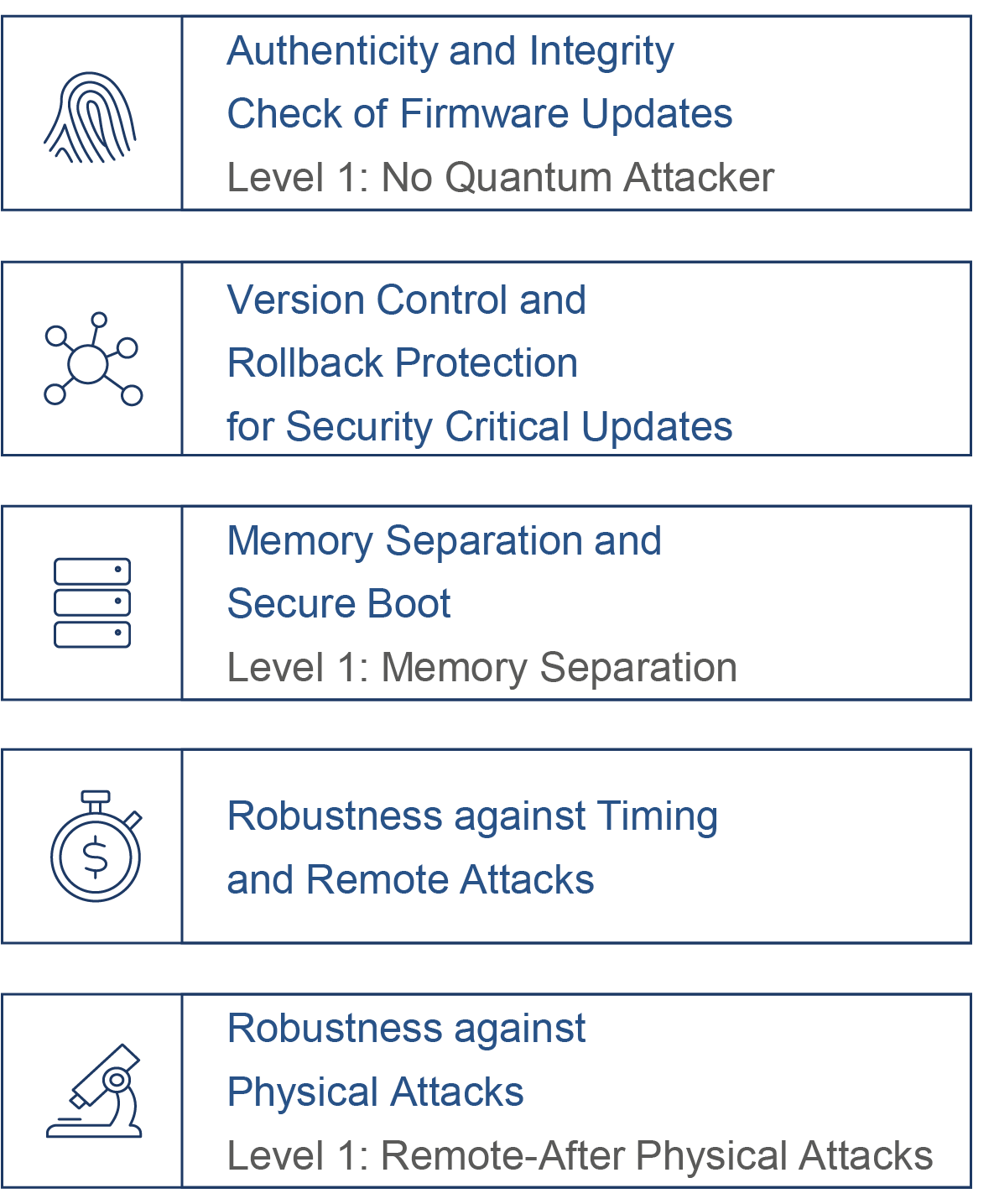
Optional Improvements
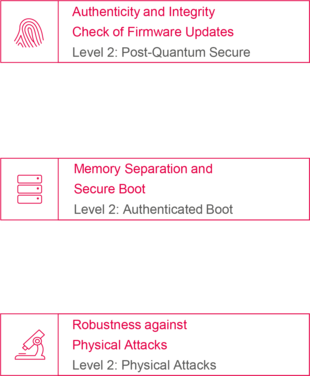
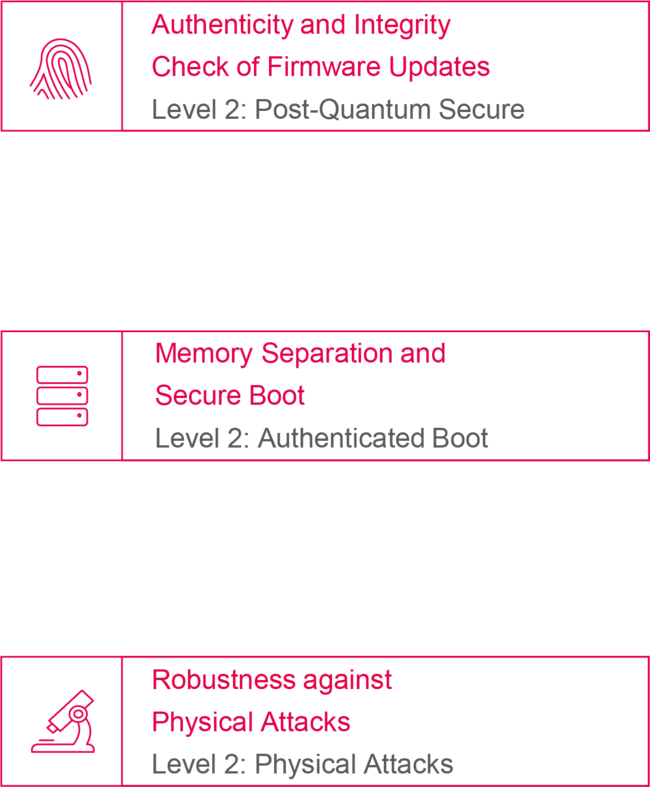
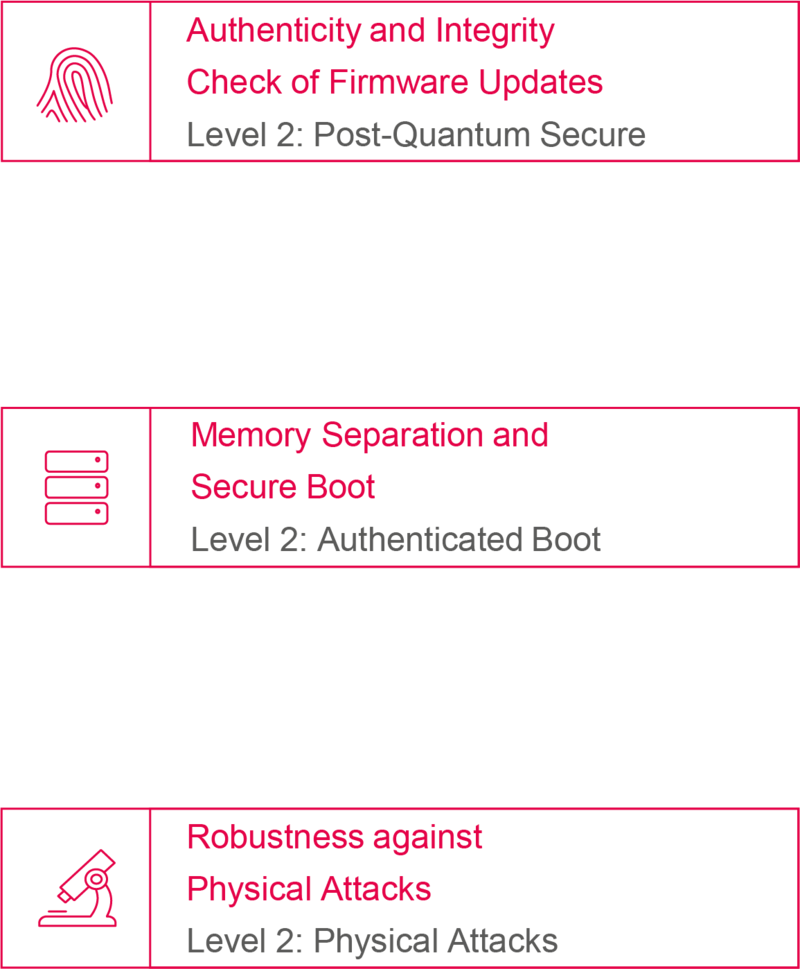
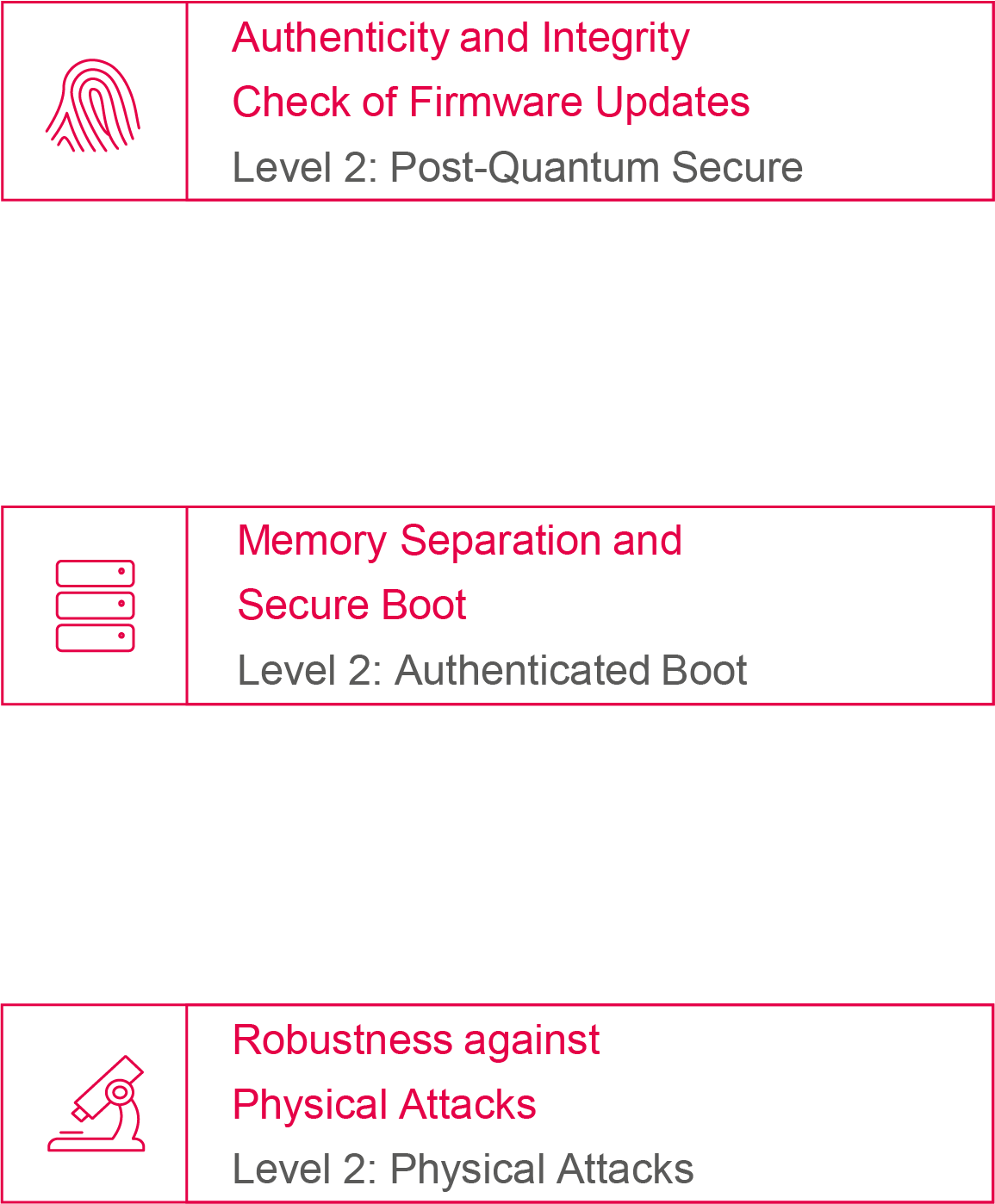
Need to know
The so-called Technical Security Requirements include attributes that have been defined specifically for a firmware update mechanism.
Some of these requirements are mandatory for any Secure Firmware Update mechanism, others may be added based on the envisioned use case of a product and are optional in the sense of this evaluation concept.
Download with restricted access
Further certifiable security requirements for the actual use case (optional)
Additional (Optional) Requirements
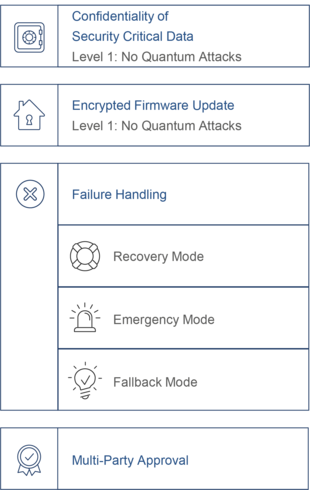
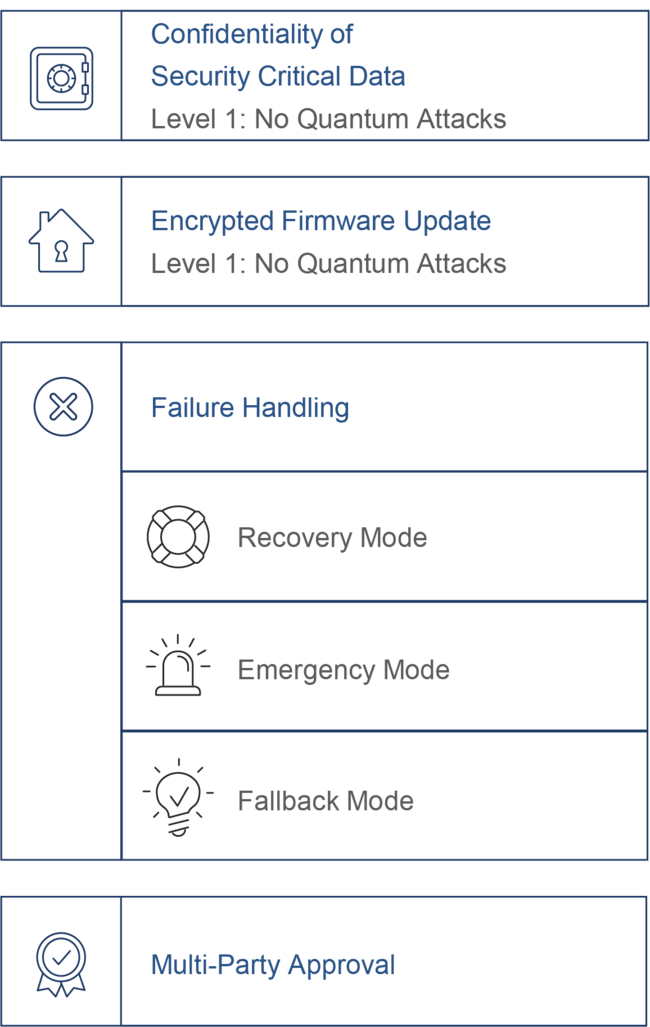
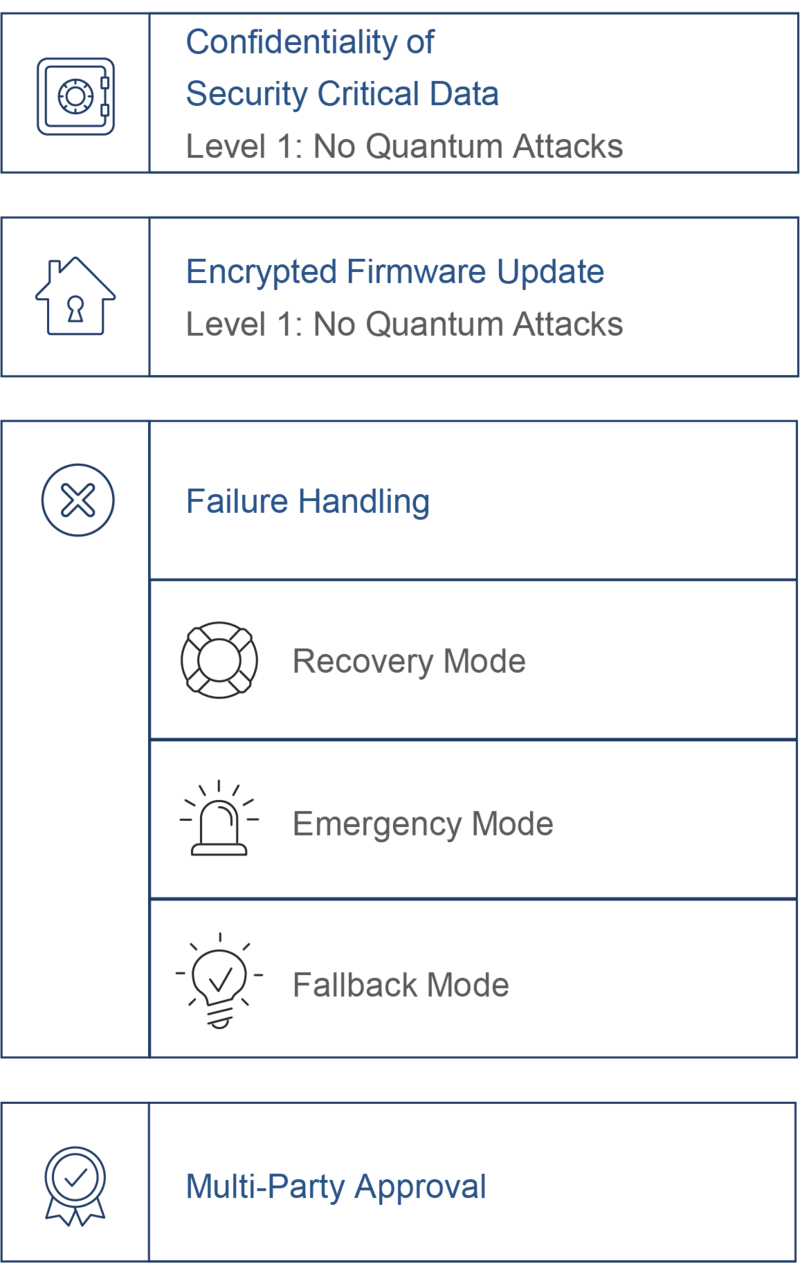
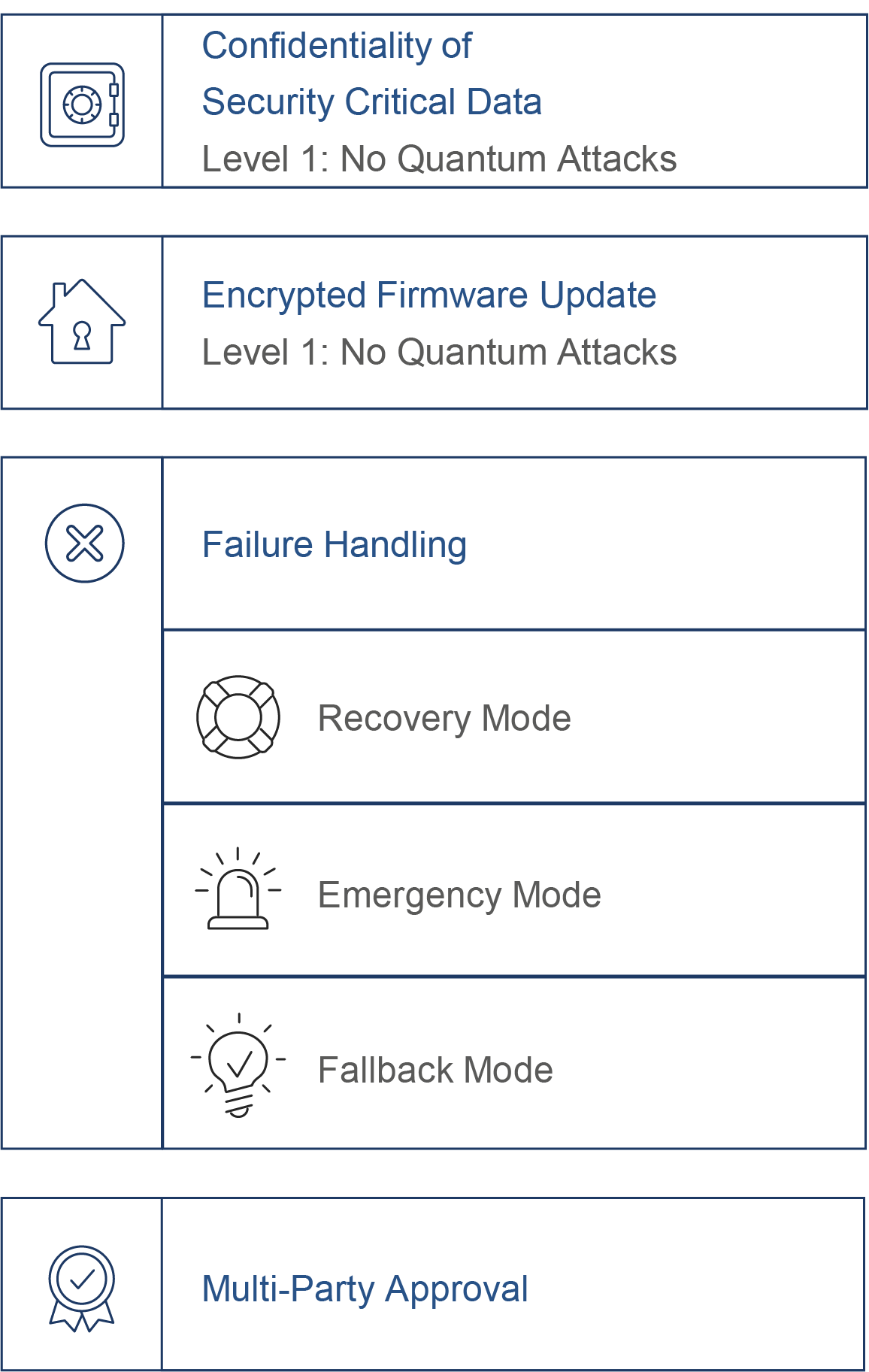
Available Alternatives (Different) or Improvements (Better)

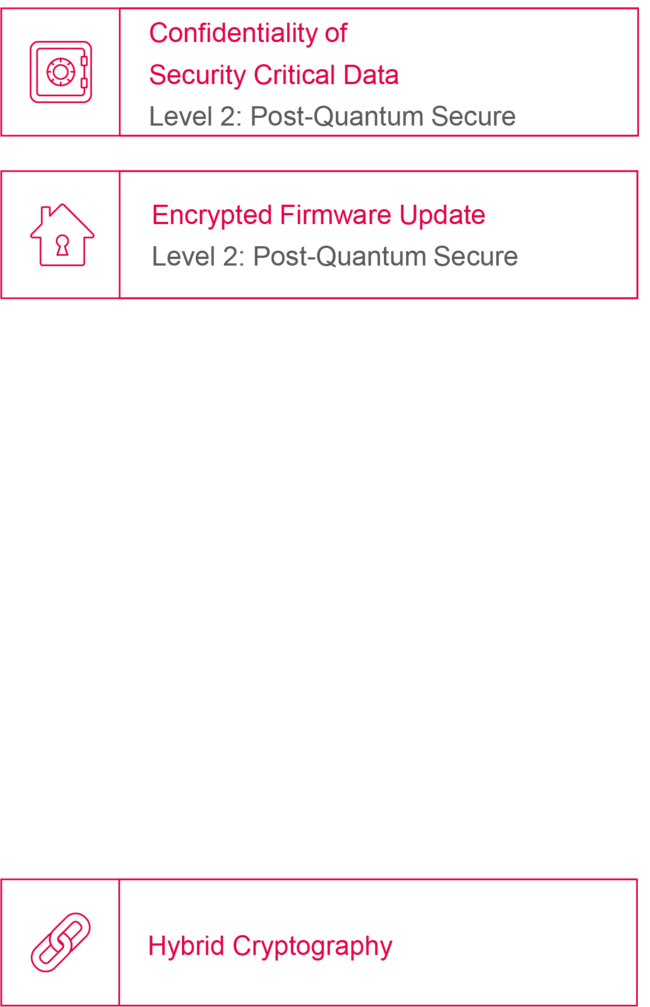
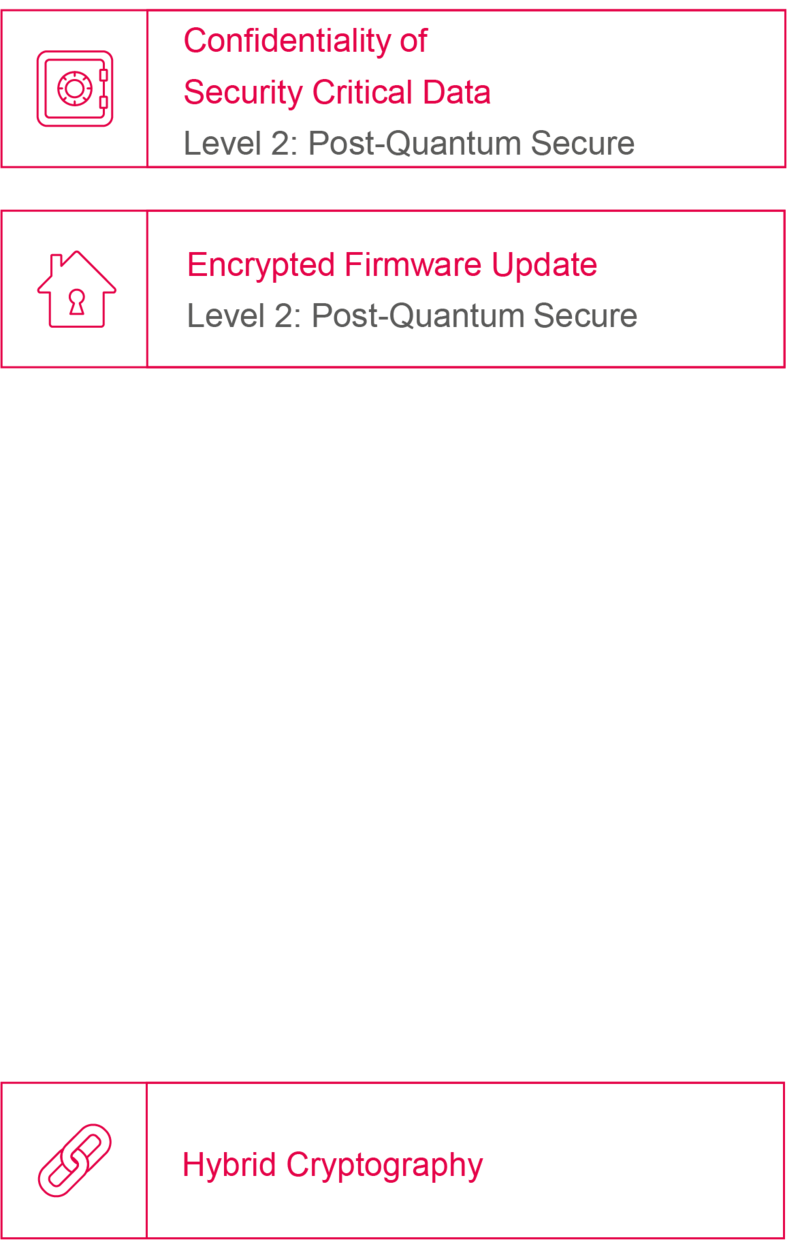
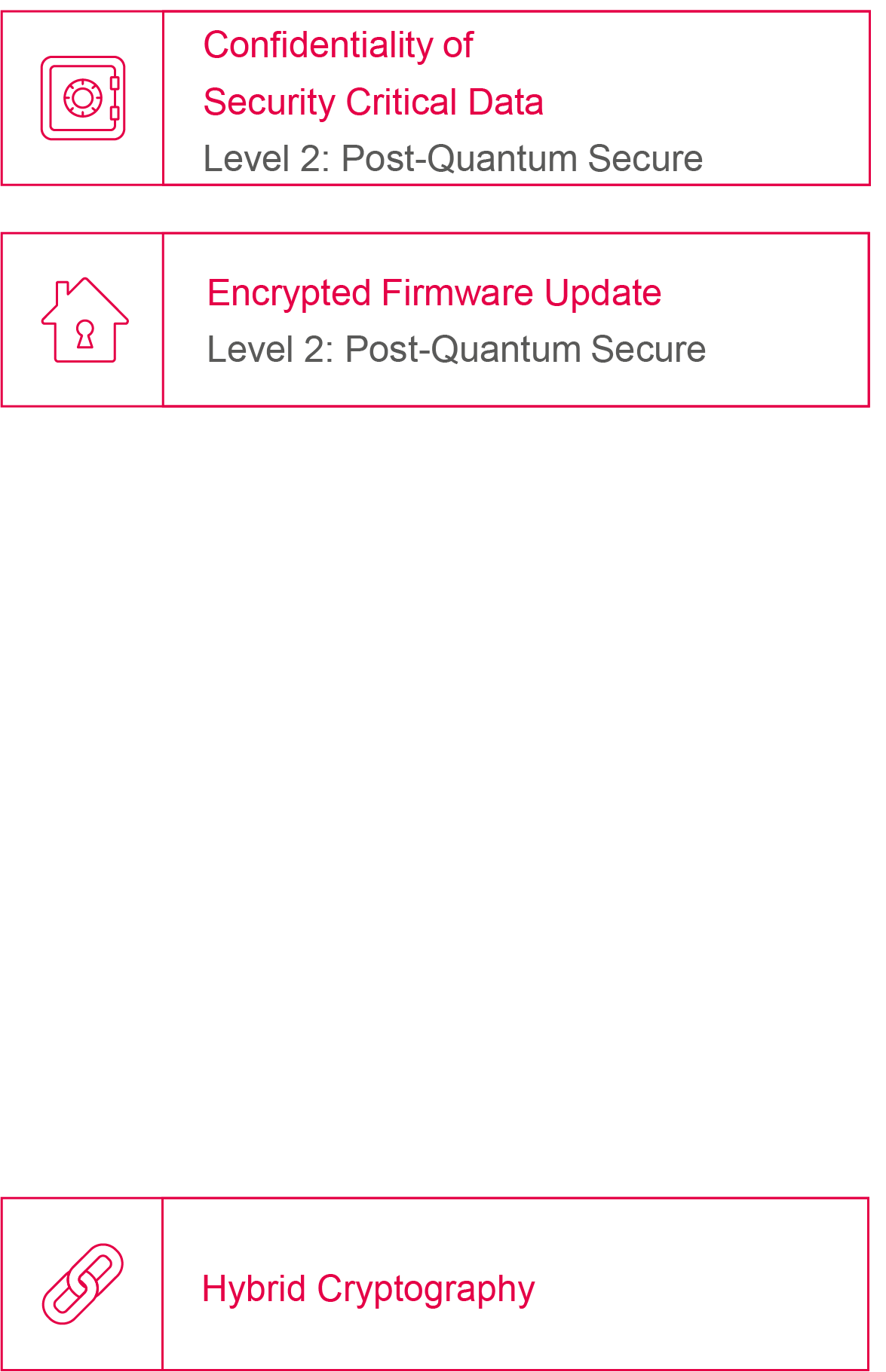
Your Options
Our level system allows to address various industry needs with one single evaluation concept, and to scale the efforts spent in implementing, evaluating and certifying the solution to the envisioned use-case.
Besides choosing optional components to their liking, for some Technical Security Requirements developers can further decide on its level. Levels represent a hierarchy, i.e. a higher level security requirement encompasses the lower level’s ingredients and adds additional checks to address a stronger attacker’s resources (e.g. a quantum computer).
As the chosen requirements are printed on the certificate, this flexible setup allows users to easily decide if a certified solution fits their needs.
Your benefits
- Faster time-to-market: Only the firmware updater must be ready to start certification; no complete firmware needed.
- Support for agile development: Since only the updater is certified, all other code can be updated without losing certificate validity.
- Reusability: The same, certified firmware updater can be used for a variety of products.
- Cost reduction: Total evaluation and certification time is lower; hence also costs are significantly lower than for full evaluation of firmware.
Why test & certify your firmware updater?
Every day, more and more IT products that are relevant to our daily lives are connected to the Internet. With the advancing networking, the threat potential from cyber attacks is also increasing at the same time.
In particular, an insecure firmware update mechanism serves as the main attack path for cyber criminals to take control of a device. This makes the security of firmware updates - especially in the Industrial Internet of Things (IIoT) - the most important requirement for the security of embedded systems.
With the help of our new evaluation and certification approach, chip manufacturers can now objectively prove that they have implemented a secure firmware update mechanism that meets the highest security requirements. The Trusted Product certificate thus serves as proof of trust for business partners as well as customers and leads to a clear competitive advantage, as certified manufacturers distinguish themselves positively from their competitors.
Our Focus: Secure Update mechanisms
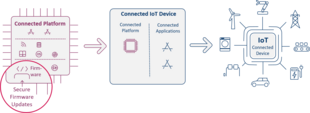
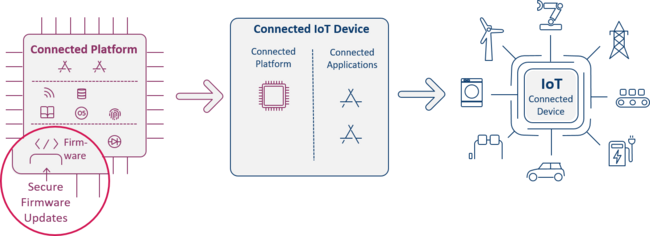
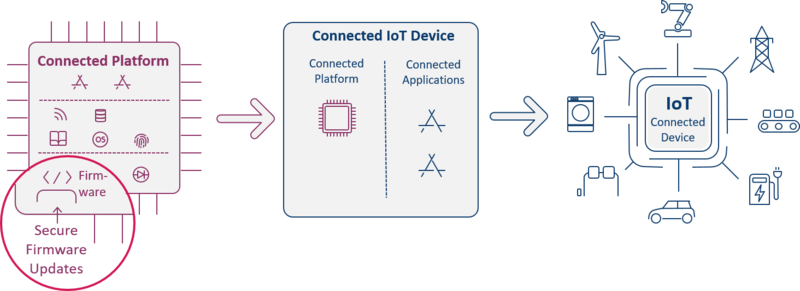
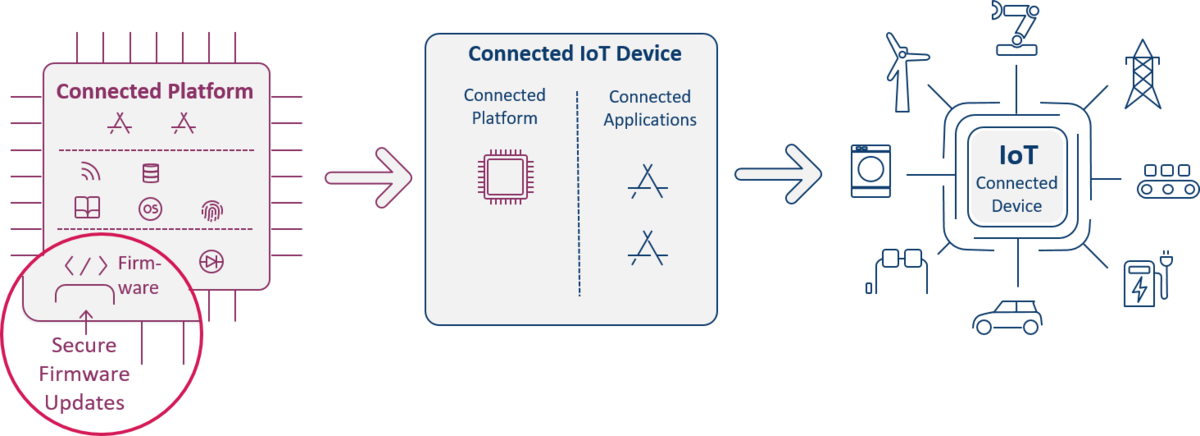
Frequently asked questions:
Various evaluation and certification schemes exist, each with the objective to increase the assurance that components and systems implement adequate protection against cybersecurity attacks. However, a certification can only address attacks known as of today, with limited outlook into the future. When studying today’s certification schemes a common ground to mitigate this restriction can be identified: the requirement on the product to provide means to fix a security vulnerability at any time, even after successful certification. While this may sound like a contradiction to security certification on first glance, it is rather a reflection of what consumers are well-used to already: frequent patches distributed to our Personal Computers on well-scheduled, regular patch days.
Another observation that can be made comparing nowadays’ certification schemes is that they address the security of product- or industry-specific functionalities of the component or system, and add the requirement for a (secure) patch mechanism.
However, reality is often different, especially when considering embedded devices such as Integrated Circuits (ICs) or System-on-Chips (SoCs). Here, in contrast to pure software development, processing time for wafer production and wafer testing become a decisive factor, and often build the bottleneck for time-to-market considerations. Therefore, it is beneficial to pull-in these time-consuming steps, and have a solution-agnostic, general purpose hardware, paired with a general purpose firmware loader, at hands even before solution-specific firmware development begins. At the same time decoupling these steps simplifies logistics at the manufacturers’ side, too.
To address this industry approach, the Firmware Update Evaluation Concept from TÜVIT introduced here assesses solely the patch or firmware update mechanism independently of the functionalities the component or system will eventually be used for.
Certification by TÜVIT provides proof of trust and security to business partners and customers, even though – or especially when – the ultimate use case has not yet been determined.
Absolutely! After a design and code review, the concept provides for penetration tests. If the TÜVIT experts discover weak points already in this phase, these are addressed to the manufacturer. In this way, both the product and the chances of successful certification can be improved.
The certificate is valid for two years.
Yes, in particular there is the possibility to adjust the evaluation depth, and thus the time and cost of the audit, to the expected attack potential. Further details on this can be found in the certification concept.
Basically yes. A secure firmware loader is the basis of every secure IT product. Certification methodologies such as Common Criteria or IEC 62443 therefore justifiably demand a security check of these functionalities. Therefore, when developing the set of criteria, we paid special attention to the possibility of reuse for a wide variety of use cases.
Tel.: +49 30 2007700 66
Fax: +49 30 2007700-99
e.behrendt@tuvit.de








